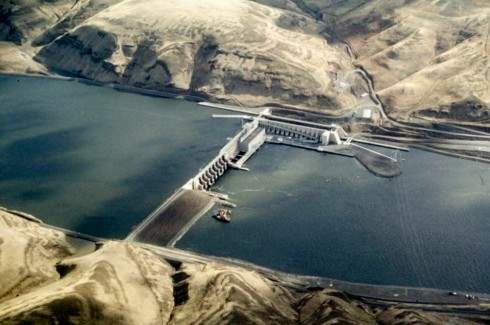forum
library
tutorial
contact

Rely on Science
for Snake River Policy
by Jack Hurty
Idaho Mountain Express, September 25, 2024
|
the film forum library tutorial contact |

|
Rely on Science
by Jack Hurty
|
Time has come to build a future that includes abundant salmon,
strong communities and a healthy environment.
 Sen. Jim Risch recently published an editorial echoing familiar claims about the importance of the lower Snake River dams, especially to energy production and the broader economy. While we respect his drive to protect Idaho's interests, it is important to carefully examine the facts and consider the future of Idaho's ecosystems, rural communities and natural heritage.
Sen. Jim Risch recently published an editorial echoing familiar claims about the importance of the lower Snake River dams, especially to energy production and the broader economy. While we respect his drive to protect Idaho's interests, it is important to carefully examine the facts and consider the future of Idaho's ecosystems, rural communities and natural heritage.
Sen. Risch describes the dams as "giant batteries" that store energy. This is wrong. The four lower Snake River dams are run-of-the-river dams -- they cannot store water or energy. Their contribution to Idaho's energy grid is limited and often results in power generation at a financial loss. Studies show that we can replace the energy produced by these dams with other renewable sources, providing the same services with greater efficiency and lower costs.
But the senator fails to mention the real crux of this issue: salmon. Idaho's salmon and steelhead populations are in dire straits. Adult fish returns have dropped to a fraction of their historical abundance, and even the so-called "good" years are not sufficient. Despite decades of effort and billions of dollars spent, our fish are on the road to extinction, in large part due to the lower Snake River dams and their stagnant reservoirs.
At the Idaho Outfitters and Guides Association, we're on the ground working in the Snake River basin every day. Our members are pillars of their communities, and our industry supports thousands of jobs and over $1 billion in economic activity in Idaho. But our livelihoods rely fundamentally on this natural resource that the lower Snake dams are inexorably destroying. As salmon and steelhead returns continue to decline, guides are forced to end seasons early, reduce their clients' harvest or even close up shop entirely. Even the so-called "good" years are a fraction of historical abundance, and are far from sufficient. We must be frank about the price we pay for these dams -- beyond the $25 billion we've spent on fish restoration, beyond the hundreds of millions of dollars spent on maintenance and repairs. They inflict very real damage on our communities, our economies and our ecosystems. It's time for a change.
We have long supported positive-sum solutions to restore our salmon without causing harm to other stakeholders. A balanced approach -- replacing services and investing in infrastructure while returning the river to its natural state -- offers a path forward for all. Investing in regional infrastructure, replacing the services and retiring these aging pieces of infrastructure give us a powerful opportunity to build a better Snake River for all, restoring a keystone of Idaho to its rightful place.
We are not proposing that Idaho abandon its agricultural or hydropower infrastructure. Far from it. Instead, we must ask: How can we maintain reliable, affordable energy, ensure sustainable transportation for our agricultural products and restore the rivers that salmon depend on? These goals are not mutually exclusive; they are achievable with vision and leadership.
The question before us is one of priorities. Do we cling to obsolete, expensive infrastructure? Or do we build a future where salmon thrive, rural economies grow and we leave a legacy of environmental stewardship for future generations?
We urge Sen. Risch and all Idaho leaders to rely on science and lead from the front with a bold vision for salmon and the Snake River. The path ahead is not easy, but as Idahoans, we know how to tackle hard challenges. The time has come to build a future that includes abundant salmon, strong communities and a healthy environment. Together, we can make it happen.
learn more on topics covered in the film
see the video
read the script
learn the songs
discussion forum
